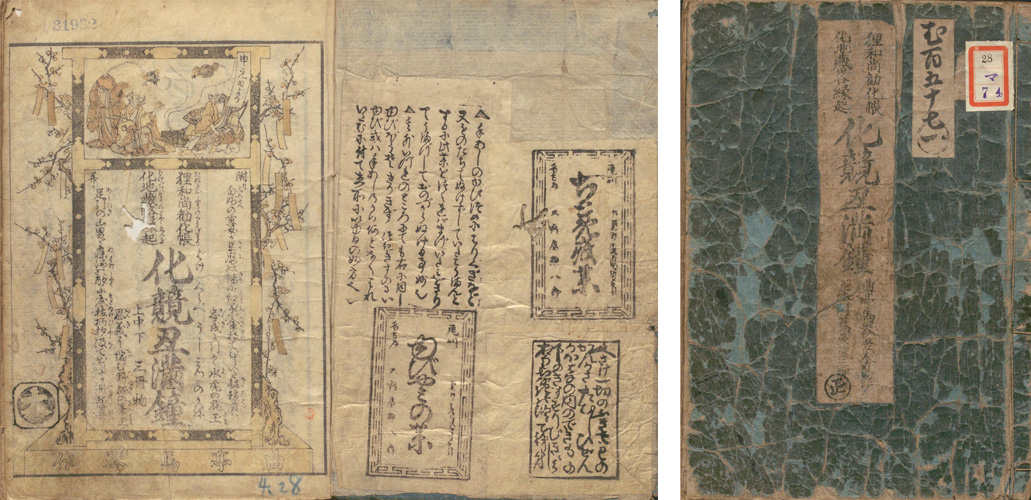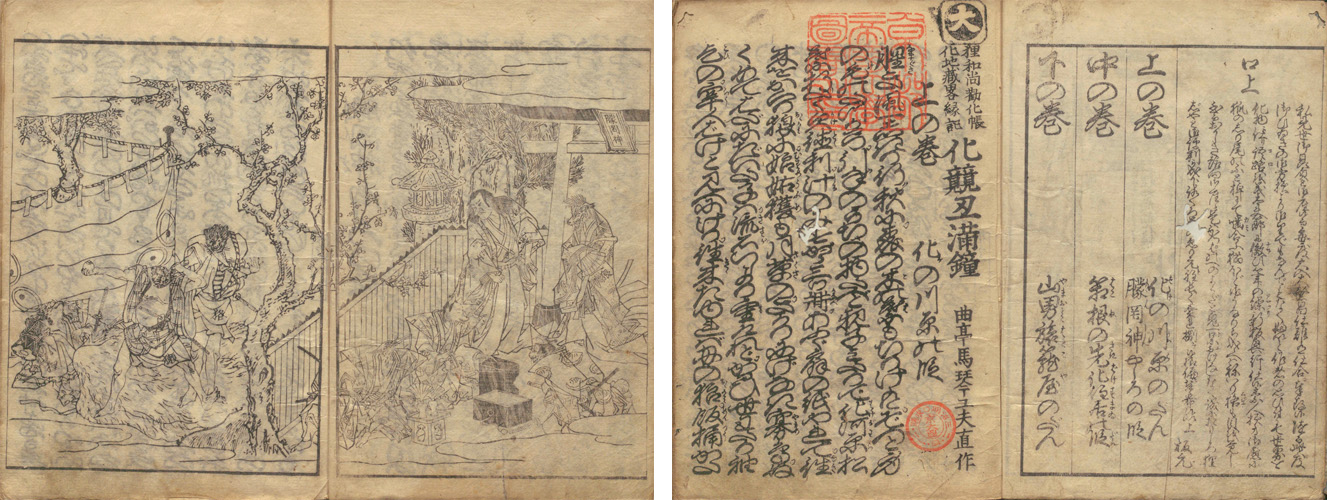[Library Network] Kyoto University Rare Materials Digital Archive: 417 titles from the Main Library’s Daiso-bon collection newly released
Four hundred and seventeen titles from the Daiso-bon collection held by the Main Library have been newly digitized and released.
Daiso-bon is a collection of books formerly owned by Daiso (大惣), a book lender run by Sohachi Onoya (大野屋惣八) and his family in Nagoya from the middle of the Edo period to the middle of the Meiji period. Book lenders at the time usually kept books in high demand in their stock and sold the ones out of fashion away to buy new ones. Daiso, however, had a policy not to sell away books they had bought and increased their inventory until the end of the Edo period when they became the largest book lender in Japan. After the arrival of mass production of books in the Meiji period, many book lenders disappeared, Daiso being no exception. Around 1898, Daiso decided to close the business and sold its enormous inventory of 16,734 titles of books, most of which were acquired by the Imperial Library (current National Diet Library), Tokyo Imperial University, Kyoto Imperial University and the Higher Normal School (current University of Tsukuba). Daiso Collection owned by Kyoto University amounts to 3,667 titles, or 13,081 volumes.
Most of the newly released books are the Maruhon (丸本) that contain entire lyrics of the Jōruri play, and Lots of works by popular dramatists, such as Kokusen'ya kassen (国姓爺合戦) by Chikamatsu Monzaemon (近松門左衛門), Kana tehon Chūshingura (假名手本忠臣蔵: RB00033452, RB00033453, RB00033454) by Takeda Izumo (竹田出雲) and Chikamichi taiheiki (捷徑太平記) by Santō Kyōden (山東京傳) are included. Bakekurabe ushimitsu no kane (化競丑満鐘) by Kyokutei Bakin (曲亭馬琴) is a rare materials that still retains the color-painted title page, the publisher’s greeting, and the advertisements.

“化競丑満鐘” Left: Title page and advertisements, Right: Front cover

“化競丑満鐘” Left: Illustrations, Right: Publisher’s greeting
408 of 417 items released this time were digitized under the “Project to Build an International Collaborative Research Network for Pre-modern Japanese Texts” by the National Institute of Japanese Literature in which Kyoto University Library participates.
- [Library Network] Conditions of Use and Licensing Restrictions for E-Resource (2025-12-01)
- Solved [Maintenance] "KURENAI" has been temporarily inaccessible(11/18 8:30-9:30) (2025-11-14)
- 【図書館機構】人権関係図書目録2023-2024を公開しました (2025-11-12)
- 【図書館機構】事務(図書系)常勤職員を公募しています(2025年11-12月) (2025-11-07)
- [Katsura Library/Yoshida-South Library]Open Access Week 2025 Exhibition Begins (2025-10-20)
- Lists of the articles by the Nobel Prize winner, Shimon Sakaguchi, Professor Emeritus, are open (2025-10-17)
- Solved [Maintenance] "KURENAI" has been temporarily inaccessible(10/16 8:00-10:00) (2025-10-15)
- 【Main Library/RIMS Library】In Commemoration of the Abel Prize: Exhibition of Books and Papers Related to Dr. Masaki Kashiwara” is being held. (- Dec. 24) (2025-10-15)
- [Yoshida-South Library/Katsura Library]Exhibition Celebrating Professor Susumu Kitagawa’s 2025 Nobel Prize in Chemistry Now Open(Oct. 10-) (2025-10-10)
- Lists of the articles by the Nobel Prize winner, Susumu Kitagawa, EVP and Distinguished Professor, are open (2025-10-09)